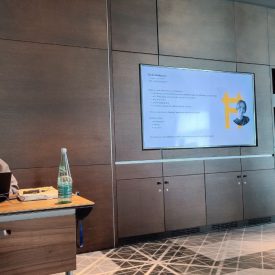
Back from PGDay UK 2024
Last Wednesday (September 11, 2024), PGDay UK took place in London. Some of my colleagues live in the area (or not too far away), so it was a great occasion to spend time together! Since London is also a lovely city to visit, we made sure to leave some time for sightseeing 🙂
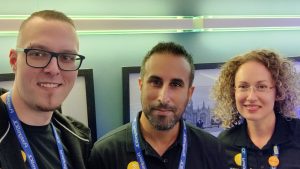


Despite the event being quite small this year, I personally found the schedule quite exciting. I must admit I was a bit sad that there weren’t more attendees. I hope to see the attendance grow in the future and would like to once again thank the conference organizing team for their hard work and dedication in making this wonderful event happen!


During the opening remarks, Dave dedicated this year’s conference to the memory of Simon Riggs. Simon’s contributions to PostgreSQL were profound, shaping the project in significant ways and leaving a lasting impact on the entire PostgreSQL community.

Magnus Hagander then kicked off the day by covering everything we need to know about PostgreSQL 17. TL;DR: RC1 is already available, so please test it with your applications and tools before the final release!
At the time Magnus prepared his slides, PostgreSQL 17 had 2,635 individual commits, with 3,940 files changed, 409,815 insertions(+), and 205,642 deletions(-).
On the backup and replication front, you might already know that pg_basebackup now supports incremental backups. As Magnus mentioned, this is great for those relying on PostgreSQL’s core tools, but it doesn’t replace a more comprehensive solution like pgBackRest.
On the database administration side, the change I’m personally most excited about is the move of some pg_stat_bgwriter statistics to the new pg_stat_checkpointer view.
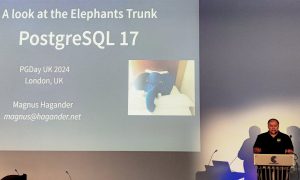
Next, we had Ryan Booz speaking about PostgreSQL partitioning.
He shared some valuable advice:
– use the right tool for partition automation (e.g., pg_partman);
– hot partitions should fit within shared_buffers;
– too many partitions can increase planning time, so partition wisely;
– always filter by the partition key in your SQL queries;
– …
He followed up with a short demo using his bluebox sample database, an updated version of the Pagila database.
I really hope Ryan will share his slides!
After the first coffee break, Jimmy Angelakos demonstrated the power of PostgreSQL’s Full Text Search and how it could easily be used to replace Elasticsearch.
To wrap up the morning sessions, Henrietta Dombrovskaya advocated for the use of pgBadger, a PostgreSQL log analyzer that provides fully detailed reports. Hettie and her team use pgBadger to parse logs and store the output in a PostgreSQL database to conduct deeper log analysis. With some clever SQL queries, they were able to demonstrate how poorly configured ORMs can negatively impact their production database…
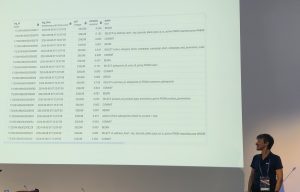
Lunch time was quite short, and even shorter for me as I needed to prepare for my own presentation – setting up the laptop, microphone,…
I felt lucky to have the opportunity to share this user-feedback story on how to achieve minimal downtime in PostgreSQL maintenance tasks. It was based on a customer project we worked on earlier this year, upgrading their clusters to the latest PostgreSQL major version. Given their interesting setup (combining Streaming Replication, pgBackRest, and multi-processes PgBouncer), I thought it would be great to share that experience.
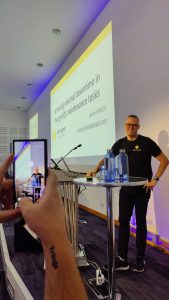
Since I needed to cool off a bit after my talk (and grab something to eat since I had mostly skipped lunch), I unfortunately missed Alastair Turner‘s presentation on their Transparent Data Encryption experimental open-source extension, pg_tde.
After a well-deserved tea time break, Jonathan Katz wrapped up the day with a talk on pgvector and the challenges associated with vector data: apparently, even pgvector faces some vacuum issues…
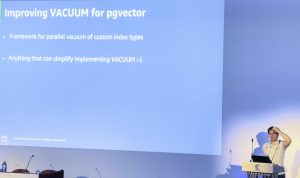
As the conference concluded, it was clear that the event was filled with valuable insights and a strong sense of community. I encourage everyone to mark their calendars for next year’s edition!







